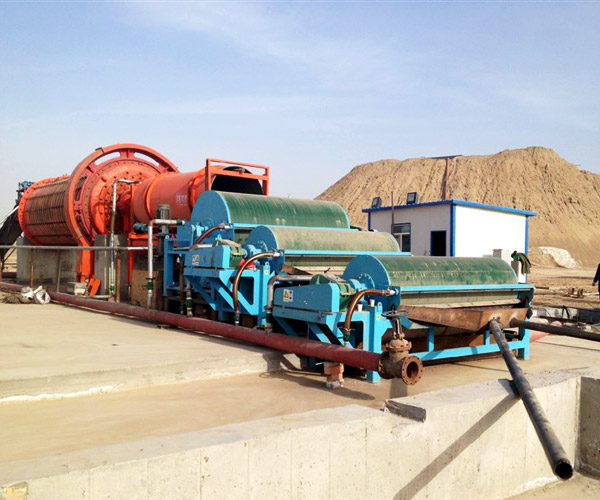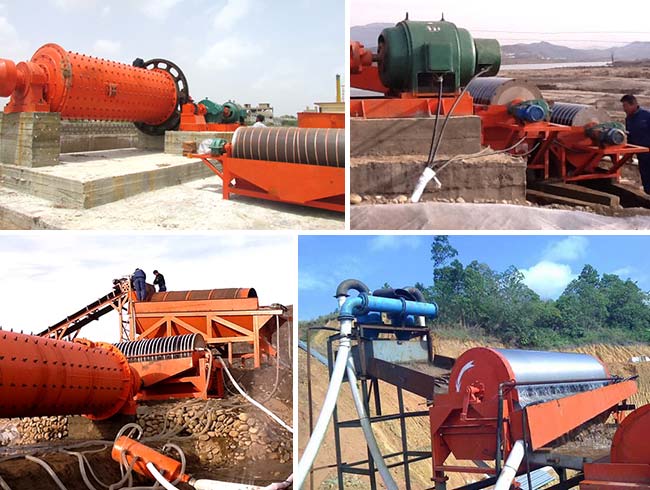
Magnetic separation process flows
1. High efficiency
2. Low energy consumption,
3. Stable performance
High Intensity Magnetic Separation
Limonite ore passes to high intensity magnetic separator after classifier. High iron content (+47.69%) limonite ore is moved to thickener and low iron content one to high intensity magnetic scavenger separation. The middlings are mixed with rough middlings for thickening process, while the rest ones are discharged as tailings.

Magnetic process (sometimes called flotation separation) is a method of separation and widely used in the wastewater treatment and mineral processing industries.
First thickening, classification and grinding
After first thickening, low iron content (-47.25%) limonite ore is moved to ball mill to be grinded into finer powder (90%0.067mm). The fine ore powder is mixed with middlings after first thickening for second thickening process.
Second thickening
The second thickening is conducted for further upgrading of limonite iron ore. The product with iron content lower than 40.08% returns to scavenging, and the one higher than 49.04% passes to reverse flotation.
One common use for magnetic separation is to remove unwanted metal from a shipment of goods. Magnetic separation can help companies keep materials pure, as well as remove things like nails and staples that may have crept into a shipment. The equipment can also purify ores, separate components for recycling, and perform a variety of other tasks where metals need to be separated or isolated. Equipment can range in size from a desktop unit for a lab that needs to process small amounts of material to huge drums used in scrap metal recycling centers.
Technical Data
Quick Way To Get Price
Tell us your needs, there will be more favorable prices!
